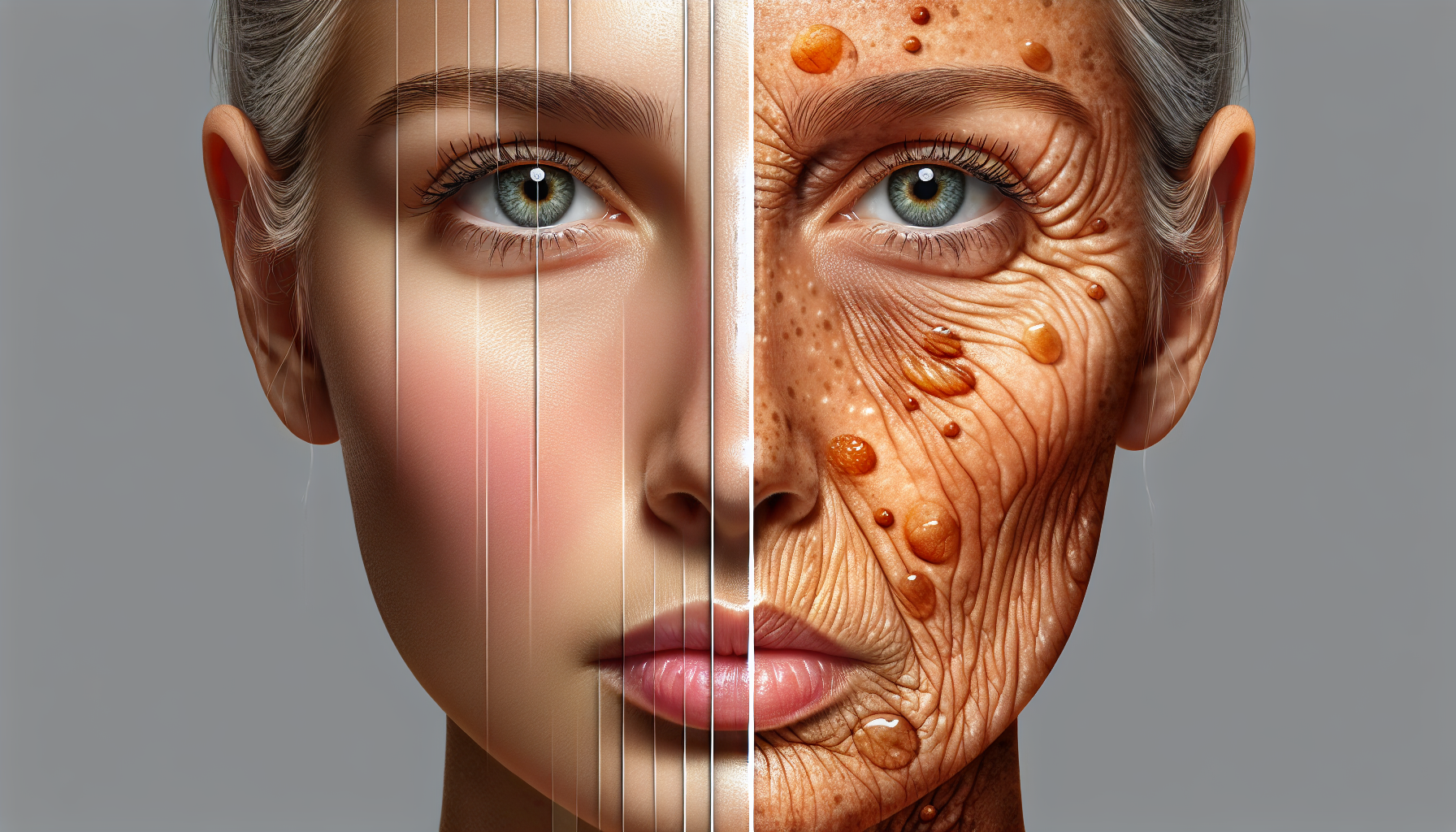Skin health is a vital aspect of our overall well-being and appearance, with photoaging representing one of the most visible signs of skin damage over time. Photoaging refers to the premature aging of the skin caused by repeated exposure to ultraviolet (UV) radiation, primarily from the sun. This article explores the mechanisms of photoaging, preventative strategies, and treatment options to maintain a youthful and healthy skin appearance.
Understanding Photoaging
Photoaging is not merely a superficial concern; it is a complex biological process that affects the skin’s structure and function. UV radiation penetrates the skin layers, causing DNA damage, promoting the production of free radicals, and degrading collagen and elastin fibers. This results in the development of fine lines, wrinkles, age spots, and a loss of skin elasticity.
The Role of Collagen and Elastin
Collagen and elastin are essential proteins that provide structure and elasticity to the skin. UV exposure accelerates the breakdown of these proteins, leading to sagging skin and the formation of wrinkles. To gain a deeper understanding of the structural importance of these proteins, consider exploring the information on skin health.
Preventative Measures
Preventing photoaging is more effective than trying to reverse the damage once it has occurred. Here are several strategies to protect your skin from photoaging:
Sun Protection
The most crucial step in preventing photoaging is to protect your skin from the sun. Use a broad-spectrum sunscreen with an SPF of 30 or higher daily, and reapply every two hours when exposed to the sun. Additionally, wear protective clothing, such as wide-brimmed hats and long sleeves, and seek shade during peak UV hours.
Antioxidants
Antioxidants play a significant role in neutralizing free radicals that cause oxidative stress and skin damage. Incorporating antioxidant-rich foods into your diet, as well as using skincare products containing antioxidants, can help mitigate the effects of photoaging. To learn more about the benefits of antioxidants in skincare, read Using Antioxidants to Prevent Skin Damage.
Proper Hydration
Maintaining adequate hydration is essential for skin health. Drinking sufficient water and using moisturizers can help maintain the skin’s barrier function and elasticity. A detailed discussion on the importance of hydration for skin health can be found in the article Optimizing Skin Health with Proper Hydration.
Treatment Options for Photoaged Skin
When prevention is not enough, or if photoaging has already occurred, there are several treatment options available:
Topical Retinoids
Retinoids, derivatives of vitamin A, are proven to improve the appearance of photoaged skin by stimulating collagen production and accelerating cell turnover. They can minimize fine lines and improve skin texture.
Chemical Peels
Chemical peels involve the application of a chemical solution to remove the outer layers of damaged skin, revealing smoother, more youthful skin beneath.
Laser Therapy
Laser treatments can target various symptoms of photoaging, such as hyperpigmentation and vascular changes, by removing the outer skin layers and stimulating collagen production.
Microneedling
Microneedling involves using fine needles to create tiny punctures in the skin, which can stimulate collagen production and improve the appearance of wrinkles and fine lines.
Lifestyle Factors
In addition to direct skin care interventions, addressing lifestyle factors is also crucial for preventing and treating photoaging:
Nutrition
A diet rich in vitamins, minerals, and antioxidants can support skin health. Foods high in omega-3 fatty acids, such as fish, can also have anti-inflammatory effects on the skin.
Sleep
Quality sleep is vital for skin repair and regeneration. Ensure you are getting 7-9 hours of sleep each night to give your skin time to recover from daily stressors.
Stress Management
Chronic stress can exacerbate skin aging by increasing cortisol levels, which can degrade collagen. Strategies for reducing stress, such as mindfulness and exercise, can be beneficial. For more insights, consider the article Strategies for Reducing Stress to Improve Skin Health.
Conclusion
Preventing and treating skin photoaging involves a holistic approach that encompasses sun protection, skincare, and healthy lifestyle choices. By understanding the underlying causes of photoaging and implementing comprehensive preventative measures, you can maintain healthy, youthful-looking skin.
For those seeking to address existing photoaged skin, a combination of topical treatments, professional procedures, and lifestyle adjustments can offer significant improvements. It’s never too late to start taking care of your skin and mitigating the effects of photoaging.
Additional Resources
For further reading on the topics discussed, the following external resources offer valuable information:
- The Skin Cancer Foundation provides extensive resources on sun protection and the prevention of photoaging.
- American Academy of Dermatology offers in-depth guidance on skin care for aging skin.
- The National Center for Biotechnology Information presents a comprehensive study on the role of topical antioxidants in photoaging.
- DermNet NZ details the clinical aspects of photodamage and its management.
- The International Dermal Institute explores the effects of stress on skin aging and strategies to counteract these effects.
By staying informed and proactive, you can enjoy healthy, resilient skin that withstands the test of time and the challenges of our environment.



